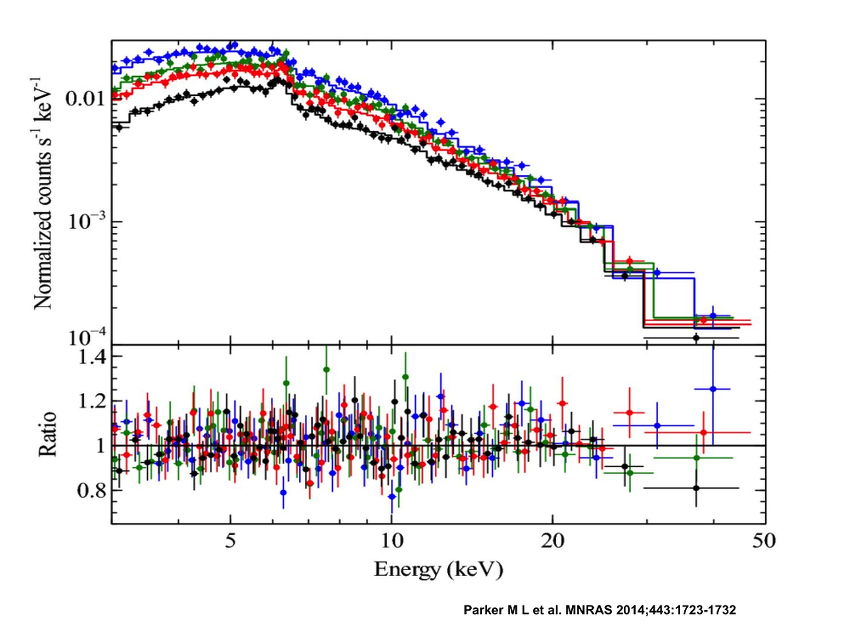
 Credit: M. L. Parker et al. (MNRAS 2014, vol. 443, pp 1723-1732)
Credit: M. L. Parker et al. (MNRAS 2014, vol. 443, pp 1723-1732)
NuSTAR Near the Horizon
How close can you get to a black hole? The ultimate barrier is the well-known and oft-mentioned "event horizon", the boundary which separates the spacetime near the black hole from the rest of our Universe. The radius of an event horizon is known as the Schwarzschild radius. Anything which comes inside the Schwarzschild radius cannot communicate itself to the outside Universe. The spacetime just outside of the black hole is distorted, as predicted by Einstein's general theory of relativity. Currently we cannot directly image the space near the event horizon to measure these effects. But astronomers do have indirect means to probe spacetime around black holes. Material falling in to a black hole forms hot, X-ray emitting gas, and the distribution of this emission with X-ray energy can be used to determine the magnitude of the general relativistics effects on the emitting material. New observations of the X-ray spectrum by the central, supermassive black hole in a galaxy known as Mrk 335 by the NuSTAR satellite observatory have provided astonishing new constraints on the state of the material swirling into this central black hole. These observations, shown above, suggest that the emission is strongly influenced by the distortions of spacetime predicted by general relativity. Models of the spectra which takes these distortions into account are compared to the data points above, and do a good job in describing the X-ray spectrum. This model requires that the X-ray emitting material seen by NuSTAR is within two Schwarzschild radii from the event horizon. This is amazingly close, and may mean that the emitting material that we detect may have already made its descent through the event horizon.
Published: August 18, 2014
<
HEA Dictionary ● Archive
● Search HEAPOW
● Other Languages
● HEAPOW on Facebook
● Download all Images
● Education ● HEAD
>

Each week the HEASARC
brings you new, exciting and beautiful images from X-ray and Gamma ray
astronomy. Check back each week and be sure to check out the HEAPOW archive!
Page Author: Dr. Michael F. Corcoran
Last modified Monday, 26-Feb-2024 17:22:42 EST


